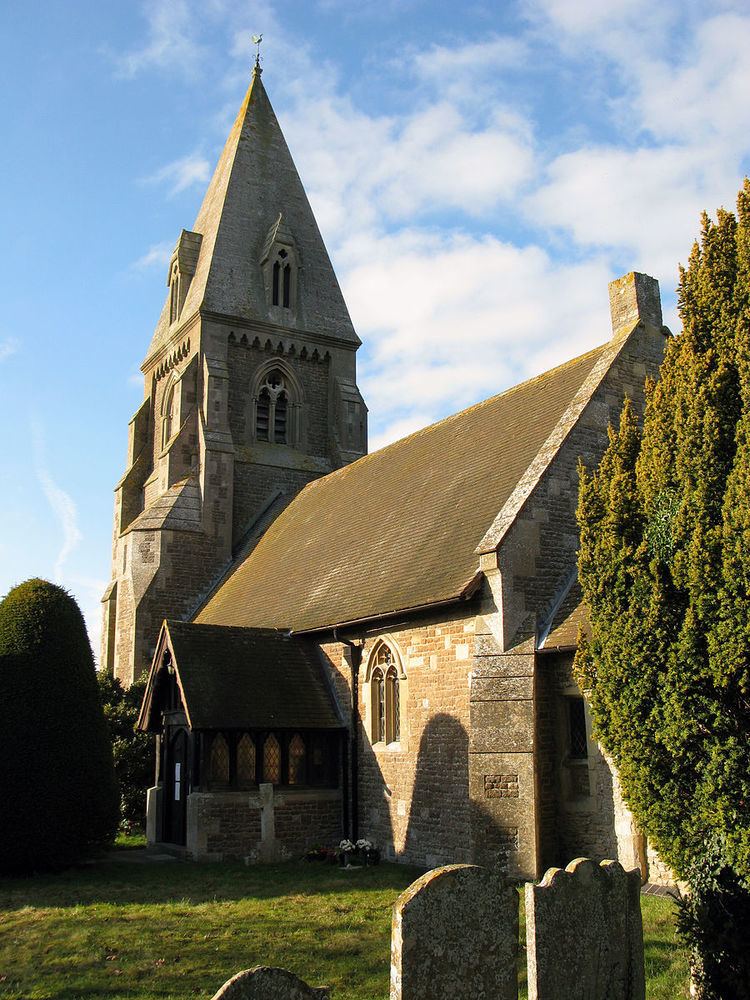Population 350 (2011 Census) Civil parish Appleford Area 2.97 km² Dialling code 01235 | OS grid reference SU5293 Sovereign state United Kingdom Local time Monday 6:16 PM UK parliament constituency Wantage | |
 | ||
Weather 4°C, Wind SW at 18 km/h, 82% Humidity | ||
Appleford-on-Thames is a village and civil parish on the south bank of the River Thames about 2 miles (3 km) north of Didcot, Oxfordshire. It was part of Berkshire until the 1974 local government boundary changes. The 2011 Census recorded the parish's population as 350.
Contents
Map of Appleford, Abingdon, UK
Archaeology
Evidence of Romano-British settlement has been found in a field south of the parish church plus ceramics and human burials of the same period at Manor Farm. In 1968 the Appleford Hoard of 4th-century Roman artefacts was found. It includes Roman coins, pewter ware, and ironomongery including tools, a chain and a padlock. The hoard is now in the Ashmolean Museum, Oxford.
Manor
Anglo-Saxon Appleford was in existence by the last quarter of the 9th century, when King Alfred the Great of Wessex granted land there to one of his subjects. The Domesday Book records that in 1086 the manor of Apleford belonged to Abingdon Abbey. It remained so until the dissolution of the monasteries when the abbey surrendered properties including the manor of Apulford to the Crown in 1538. Farming under an open field system prevailed in the parish until 1838 when an enclosure award was made.
Parish church
The Church of England parish church of SS Peter and Paul was originally a chapelry of Sutton Courtenay. The nave is 12th century Norman and the chancel was rebuilt early in the 13th century. Surviving early features include a Norman door on the south side of the nave and an Early English Gothic door to the chancel. The east and north walls of the chancel have original Early English lancet windows and the south wall has a Perpendicular Gothic window that was added in the 16th century.
The building was modified in the 19th century. The nave was remodelled and extended to designs by the architect Ewan Christian, and in 1885–86 the tower was rebuilt to allow a peal of six bells and the spire was added to designs by the architect William Gilbee Scott.
The tower has a ring of six bells, and a plaque on the south-west wall in the church commemorates their being rung for the millennium at noon on 1 January 2000; currently they are unringable. The fourth bell was cast at Wokingham, Berkshire in the late 14th century, and the fifth was cast by the same foundry in the late 15th century. John Warner & Sons of Cripplegate, London cast or recast the first, second, third and tenor bells in 1886, in time to be rung for the Golden Jubilee of Queen Victoria in 1887.
Samuel Green built the organ in 1777 for Abbey House of Sutton Courtenay. It was moved to Appleford parish church at a later date.
SS Peter and Paul parish is now part of the Benefice of Sutton Courtenay with Appleford.
Transport
In 1844 the Great Western Railway opened an extension from Didcot to Oxford, passing through Appleford parish and crossing the River Thames just north of the village. The new line included a station at Appleford, but the station was closed after just five years. In 1933 the GWR opened a new halt on the site, which continues in service today as Appleford railway station.
Appleford has a minimal bus service. Oxfordshire County Council route 46 runs once in each direction on a Monday morning between Clifton Hampden Post Office and Abingdon War Memorial.
Amenities
Appleford has a village hall and a Women's Institute.
Appleford used to have a pub, the Carpenters Arms, but in 2012 it ceased trading and its owner applied for planning permission to convert it into a private house.
